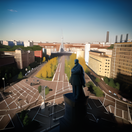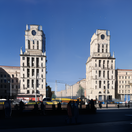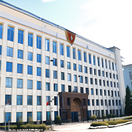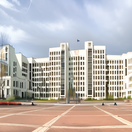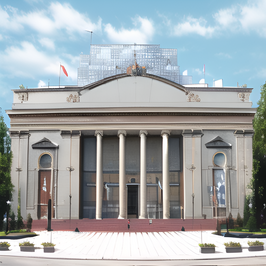Minsk (TheodoresTomfooleries): Difference between revisions
Jump to navigation
Jump to search
mNo edit summary |
No edit summary |
||
| Line 1: | Line 1: | ||
{{DISPLAYTITLE:Minsk <small><small><small><small><small><small><small><small><small><small><small><small>{{Color|white|(TheodoresTomfooleries)}}</small></small></small></small></small></small></small></small></small></small></small></small>}} | |||
{{Infobox settlement | {{Infobox settlement | ||
| name = Minsk | | name = Minsk | ||
Revision as of 21:41, 8 November 2022
Minsk
Мінск · Минск | |
|---|---|
|
From top to bottom, left to right: BSSR State Academic Theatre, Lenin Square, Station Square, Vladimir Lenin Byelorussian University, Supreme Soviet Building, State Art Museum of Byelorussia | |
| Etymology: Menya river | |
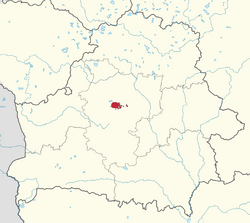 Minsk's location in the Soviet Union | |
| Coordinates: Lua error in Module:Coordinates at line 492: attempt to index field 'wikibase' (a nil value). | |
| Country | Soviet Union |
| Union republic | Byelorussian SSR |
| First mentioned | 1067 |
| Government | |
| • Body | Minsk Soviet |
| Area | |
| • Total | 2,352.5 km2 (908.3 sq mi) |
| Elevation | 280.6 m (920.6 ft) |
| Population (2019) | |
| • Total | 3,643,455 (city proper) |
| Demonym | Minsker |
| Time zone | UTC+3 |
| ISO 3166 code | SU-MIN |
| Website | minskgov |
Minsk (Byelorussian: Мінск; Russian: Минск) is the largest city and capital of Byelorussia, with a population of 3.64 million people as of the 2019 census. A city of marginal importance for most of its existence, it became the capital of the Principality of Minsk and much later Minsk Governorate, who's borders are quite similar to the modern day Byelorussia's. Minsk became the capital of an independent Byelorussia in 1918, and after the Russian Civil War, the capital of the Byelorussian SSR. Minsk was particularly devastated by the Great Patriotic War which saw Minsk's population decrease from 300,000 to 50,000~ in 1944. Minsk was rewarded the Hero City award in 1974.

